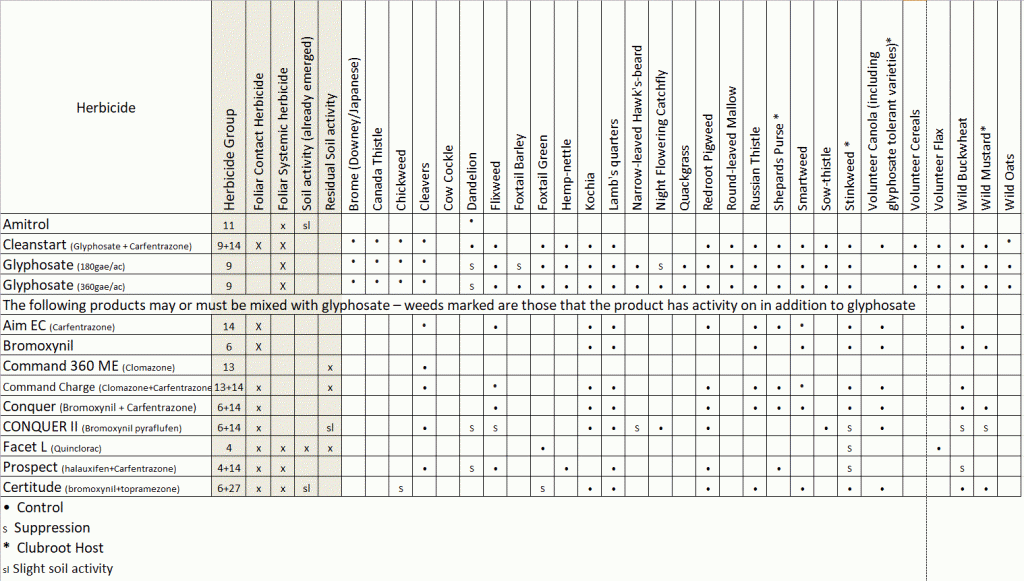Take a soil temperature test before seeding
Warm air temperature doesn’t always equal warm soil temperature. Seeding into cold soils can increase risk to seedling disease, and can both delay and reduce percent emergence. Take a seed-bed soil temperature test to determine your soil temperature. Take two readings — one in the morning and another in the evening — and develop an average temperature from that data. Be aware that areas with heavy residue cover can skew field averages as the soil will be cooler here. Quick emergence occurs when canola is seeded above a temperature of 6C. Other details and rules of thumb on taking a soil temperature test can be found in the video above or on YouTube here.
Record-keeping best tool to fight herbicide carryover
Attractive prices can cause some growers to make last-minute rotation changes in favour of canola. Fields should always maintain a minimum two-year break between canola crops to reduce the risk of infection to diseases like clubroot and blackleg. Depending on what was sprayed in your field last year, this can leave canola fields open to risk of crop injury from herbicide carryover, subsequently damaging this year’s crop. Canola should not be seeded into fields sprayed with certain products in 2020. Find a list of these products in this Canola Encyclopedia article. This list may not help much if you don’t remember what you sprayed in a given field. Good record-keeping is essential.
Make sure tank mixes are happy together

This graph can give canola growers an idea of what they’re putting in their herbicide tank and which products work best with others.
Weeds are starting to grow, meaning it’s time to scout to identify them and apply an appropriate pre-seed burnoff. Use at least two effective modes of action to minimize the risk of herbicide resistance. The accompanying graphic offers information on what tank mixes are appropriate in given situations for controlling specific weed species. This Canola Encyclopedia article features information on pre-seed burnoff timing and appropriate tank mixes.
Tips for safe seed-placed fertilizer
Small-seeded crops such as canola are generally more sensitive to seed-placed fertilizer than larger seeds. There should be no more than 20 lb./ac. of phosphate in the canola seed row under ideal soil conditions Place all other fertilizer, including extra required phosphate, in a side- or mid-row band where it will not harm germinating seeds. More information on limiting seed-placed fertilizer can be found here. You can also click here for a guide on how much N, P, K and S canola requires.